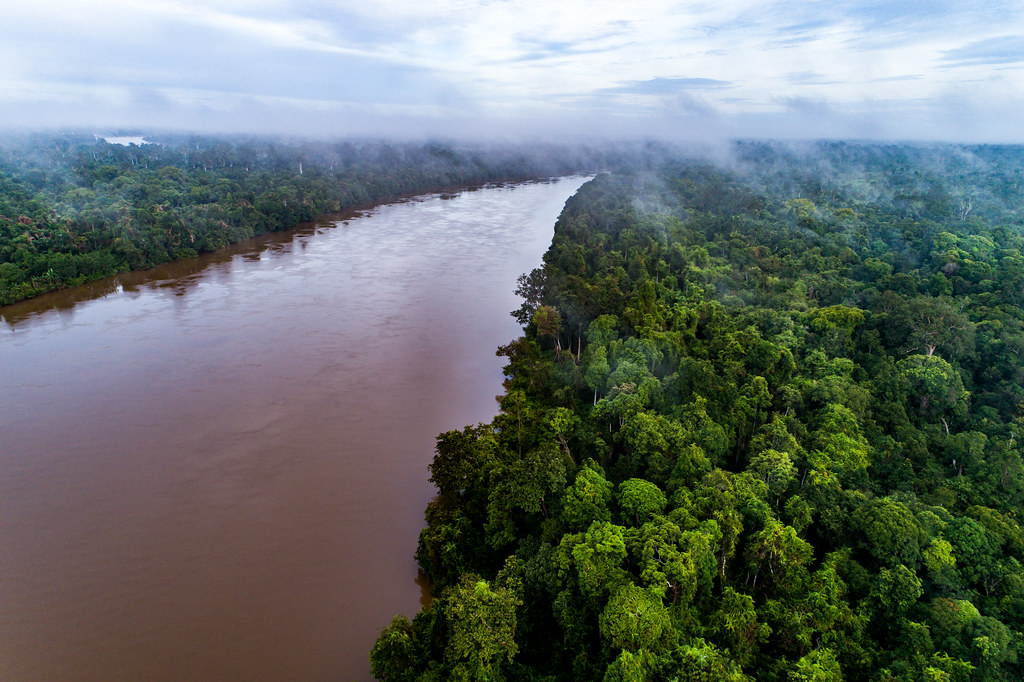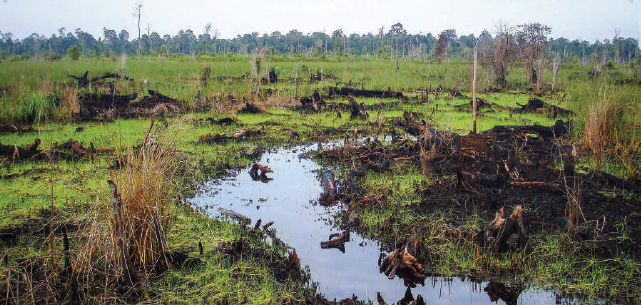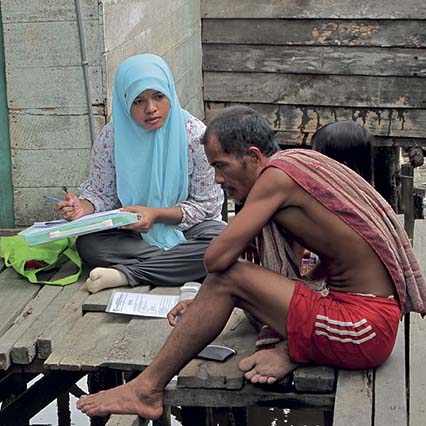











Katingan REDD+ Forest Protection
Reducing Indonesia’s emissions by protecting and restoring 149,800 hectares of peatland ecosystems
This project's goal is to protect and restore 149,800 hectares of peatland ecosystems, offering local people sustainable sources of income while tackling global climate change. The project area stores vast amounts of CO2 and plays a vital role in stabilizing water flows, preventing devastating peat fires, enriching soil nutrients, and providing clean water. Rich in biodiversity, it is home to large populations of many high conservation-value species—including some of the world’s most endangered, such as the Bornean orangutan (Pongo pygmaeus) and Proboscis monkey (Nasalis larvatus)—and is surrounded by villages for which it supports traditional livelihoods, including farming, fishing, and non-timber forest-product harvesting.
The project area is located entirely within state-designated production forest which, without the project, would be converted to fast-growing industrial pulpwood plantations. The project prevents this, having obtained full legal control of the production forest area through an Ecosystem Restoration Concession license, blocking the applications of plantation companies.
This project has completed the additional Climate, Community and Biodiversity (CCB) standards. The forest habitat supports 2 critically endangered, 11 endangered and 31 vulnerable species. Preliminary estimates indicate an estimated population of nearly 4,000 orangutans and 10,000 Bornean gibbons, as well as over 500 Proboscis monkeys. These populations represent over 5% of the remaining global populations of these species. Overall, the project area’s biodiversity includes 157 birds, 67 mammals, 41 reptiles, 8 amphibians, 111 fish, and 314 floral species.
Technology and mechanism
Ratings
AA
Credits from this project have a Very High likelihood of achieving a full tonne of CO2e avoidance or removal.
Katingan REDD+ Forest Protection
VCS1477
BeZero Carbon Rating (BCR) and rating scale
The BCR expresses BeZero's opinion that a given carbon credit represents one tonne of CO2e avoided or removed. Making this assessment requires analysing the risks a project is exposed to and how they impact the carbon efficacy of the credits issued. The full details of how the BCR assessment is conducted can be found in the BCR methodology document.
The multi stage process of assessing a credit's carbon efficacy culminates in an analytical view of the likelihood it achieves a tonne of carbon avoided and/or removed. This view is expressed through the rating definition, i.e. the range of likelihoods assigned, and reflected in the rating scale.
The BeZero Carbon Rating follows a robust analytical framework involving detailed assessment of six critical risk factors affecting the quality of credits issues by the project.
Leakage
Leakage is risk that emissions avoided or removed by a project are pushed outside the project boundary.
Leakage is weighted at 10% for determining the final BeZero rating.
Political Environment
Political Environment is risk that the policy environment undermines the project's carbon effectiveness.
Political Environment is weighted at 5% for determining the final BeZero rating.
Additionality
Additionality is risk that a credit purchased and retired does not lead to a tonne of CO2e being avoided or sequestered that would not have otherwise happened.
Additionality is weighted at 50% for determining the final BeZero rating.
Over-crediting
Over-crediting is risk that more credits than tonnes of CO2e achieved are issued by a given project due to factors such as unrealistic baseline assumptions.
Over-crediting is weighted at 20% for determining the final BeZero rating.
Perverse Incentives
Perverse Incentives is risk that benefits from a project, such as offset revenues, incentivise behaviour that reduces the effectiveness.
Perverse Incentives is weighted at 5% for determining the final BeZero rating.
Permanence
Permanence is risk that the carbon avoided or removed by the project will not remain so for the time committed.
Permanence is weighted at 10% for determining the final BeZero rating.
You can learn more about the BeZero rating scale on the BeZero website.
Katingan REDD+ Forest Protection
VCS1477
Sylvera Rating Categories
Sylvera Rating Categories are a top-level view of a carbon project's claims.
Tier 1 indicates that there is little risk that the claims of a project are overstated.
Tier 2 indicates that the claims may be overstated and that the buyers should analyze the project and carbon credit costs in detail when considering investment.
Tier 3 indicates that there is very high risk that the claims of a project are inaccurate.
Co-benefits
Sylvera measures community Co-benefits using the UN’s Sustainable Development Goals. When assessing biodiversity impacts, Sylvera evaluates species richness, regional threats to biodiversity, and project actions to reduce pressure on biodiversity. Co-benefits are scored separately, because the primary objective of Sylvera’s overall rating is to evaluate the project claims of GHGs being avoided or removed. For example, a high co-benefits score could inflate a rating, which would be an issue particularly if a project is underperforming in other key areas like carbon, additionality, and permanence. Sylvera’s Co-benefits scores are on a scale of 1 - 5.
Indicates exceptional progression of targeted SDGs, as well as extraordinary species richness and high quality activities to reduce pressure on biodiversity.
Example: The project implements a broad range of SDG activities with extensive reach in the community, operates in a biodiversity hotspot and successfully reduces pressures on the ecosystem.Indicates very limited progression of targeted SDGs, as well as very low species richness and deficient activities to reduce pressure on biodiversity.
Indicates strong progression of targeted SDGs, as well as high species richness and quality activities to reduce pressure on biodiversity.
Indicates average progression of targeted SDGs, as well as average species richness and adequate activities to reduce pressure on biodiversity.
Example: The project implements SDG activities with moderate reach in the community, has average species richness, and takes acceptable action to reduce pressures on biodiversity.Indicates very limited progression of targeted SDGs, as well as very low species richness and deficient activities to reduce pressure on biodiversity.
Indicates narrow progression of targeted SDGs, or low species richness and limited activities to reduce pressure on biodiversity.
Indicates very limited progression of targeted SDGs, as well as very low species richness and deficient activities to reduce pressure on biodiversity.
Example: The project implements limited SDG activities with limited reach in the community, while not taking meaningful action to reduce pressures on biodiversity or its species diversity is low and possibly under low threat.
Sylvera disclaimer
You can learn more about the Sylvera rating scale on the Sylvera website.
Tier 1 indicates that there is little risk that the claims of a project are overstated.
Project details





Project certifications
Certifier
Verified Carbon Standard
Registry ID
VCS1477
Crediting period term
Project methodology
VM0007 REDD+ Methodology Framework (REDD-MF) | Version 1.5
Project design document (PDD)
PDD: Katingan REDD+ Forest Protection
Current verifier of project outcomes
Aster Global Environmental Solutions, Inc.